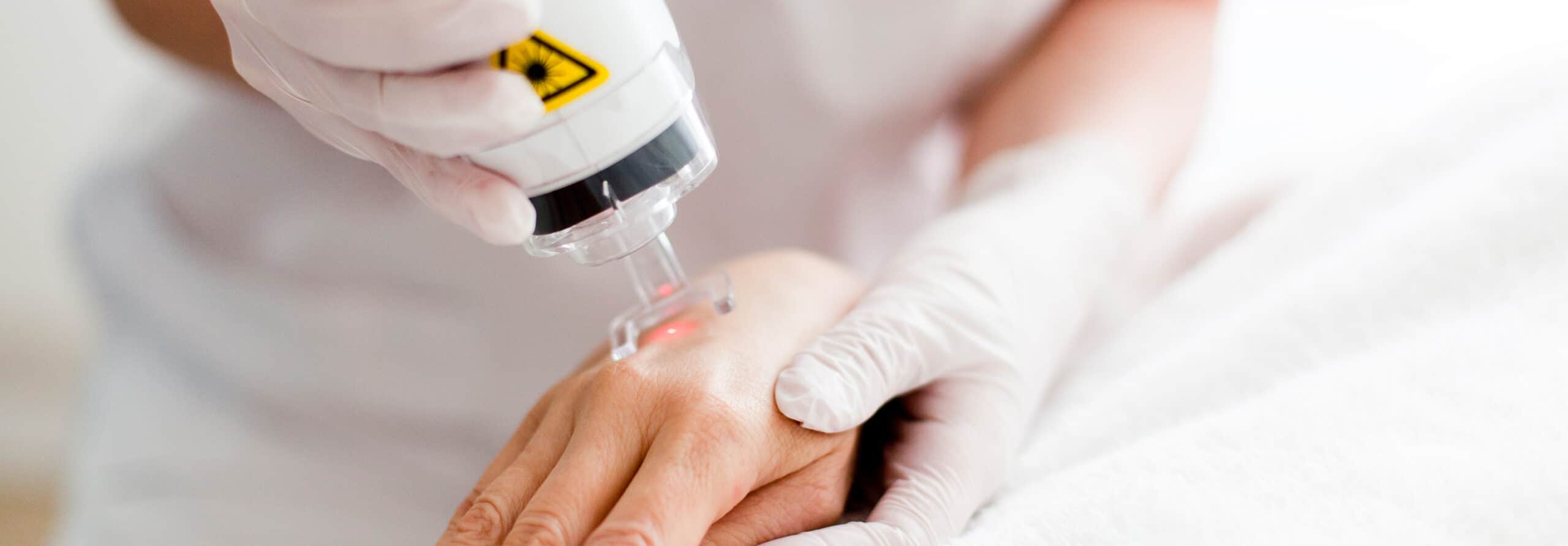How Does Laser Resurfacing Treatment Work?
Laser resurfacing is a dermatological procedure that uses lasers to smooth and refine the surface of the skin while also reinvigorating the layers of skin below. Laser resurfacing uses an intense beam of light directly on the surface of the skin to destroy the very outer layer or epidermis. The laser’s heat also addresses the skin below the epidermis, stimulating the production of collagen in the dermis which results in tighter skin tone and smoother texture over time. Getting good results with laser resurfacing can take several sessions. Your dermatologist can consult with you about the best approach for your needs.
Is Laser Resurfacing Safe?
Laser resurfacing is perfectly safe and it is a non-invasive treatment. Laser resurfacing is a very popular cosmetic procedure with a high success rate. However, as with any laser treatment, there are some risks and side effects associated with laser resurfacing. These side effects are usually mild and temporary. They include redness, swelling, and itching. In some rare cases, laser resurfacing can cause more serious side effects, such as infection or scarring.
How Much Does Laser Resurfacing Cost?
The cost of laser resurfacing will vary depending on the size of the area being treated, the number of treatments needed, and the type of laser used. Laser resurfacing is a cosmetic procedure, and is usually not covered by health insurance so the costs will typically be out-of-pocket.
When Should I Have Laser Skin Resurfacing?
Because this procedure can leave your skin vulnerable to the effects of sun damage, it is typically recommended to have this procedure done during the fall or winter, when the risk of sun damage is minimal.
How Long Does Laser Skin Resurfacing Take?
Laser resurfacing is typically an outpatient procedure, which means you will be able to go home the same day. The length of the procedure will depend on the size and number of areas being treated. Most laser resurfacing procedures take between 30 minutes and two hours.
What Are the Benefits of Laser Resurfacing?
The benefits of laser resurfacing include smoother, tighter, and younger-looking skin. Laser resurfacing can also improve the appearance of wrinkles, fine lines, age spots, sun damage, and other skin irregularities.
How Long Does It Take To Heal From Laser Resurfacing?
Healing from laser resurfacing can take anywhere from a few days to a couple of weeks. During this time, it is important to keep the treated area clean and moist to prevent infection and help the skin heal properly. Your dermatologist will give you specific instructions on how to care for your skin during the healing process.
How Long Do the Effects of Laser Resurfacing Last?
The effects of laser resurfacing are not permanent, but they can last for several years. To maintain the results of laser resurfacing, it is important to protect your skin from the sun by wearing sunscreen and avoiding prolonged sun exposure.
Laser resurfacing is a safe and effective way to improve the appearance of your skin. Laser resurfacing can help to smooth wrinkles, fine lines, and age spots while also stimulating the production of collagen for tighter, younger-looking skin.
Types Of Skin Resurfacing Treatments
There are two types of laser resurfacing: ablative and non-ablative. Ablative laser resurfacing is the more aggressive of the two types. This type of laser resurfacing removes the outer layer of skin, or the epidermis, and can also affect the middle layer of skin, or the dermis. Ablative laser resurfacing is more effective than non-ablative laser resurfacing, but it also comes with a higher risk of side effects and requires more recovery time. Non-ablative laser resurfacing, on the other hand, does not remove any skin tissue. This type of laser resurfacing uses laser energy to heat the dermis, which stimulates the production of collagen. Non-ablative laser resurfacing is a less aggressive treatment with fewer side effects and a shorter recovery time.
Ablative laser resurfacing, sometimes referred to as CO2 laser resurfacing, is typically done with a carbon dioxide (CO2) laser or an erbium laser. Non-ablative laser resurfacing, sometimes referred to as fractional laser resurfacing, is typically done with an infrared laser, such as a Nd:YAG laser, or a fractional laser.
What Conditions Does Laser Resurfacing Treat?
Laser resurfacing is one of the most popular procedures used in the world of dermatology. It can address a wide range of conditions related to aging sun damage and scarring. Conditions that can see great results through laser resurfacing include:
Given that the laser is designed to create some minor damage to the skin, patients should expect some recovery time after treatment. If you would like to explore what laser resurfacing can do for your skin, speak with your dermatologist today.


